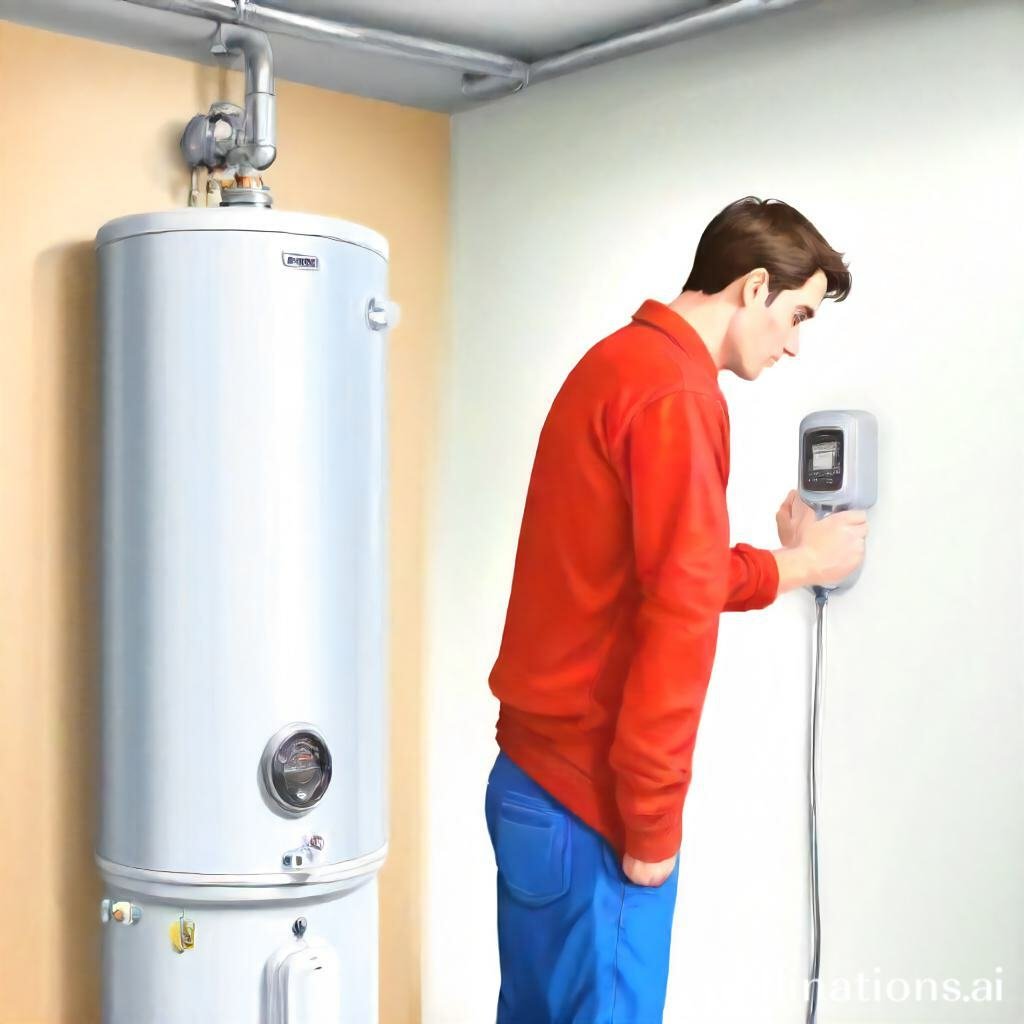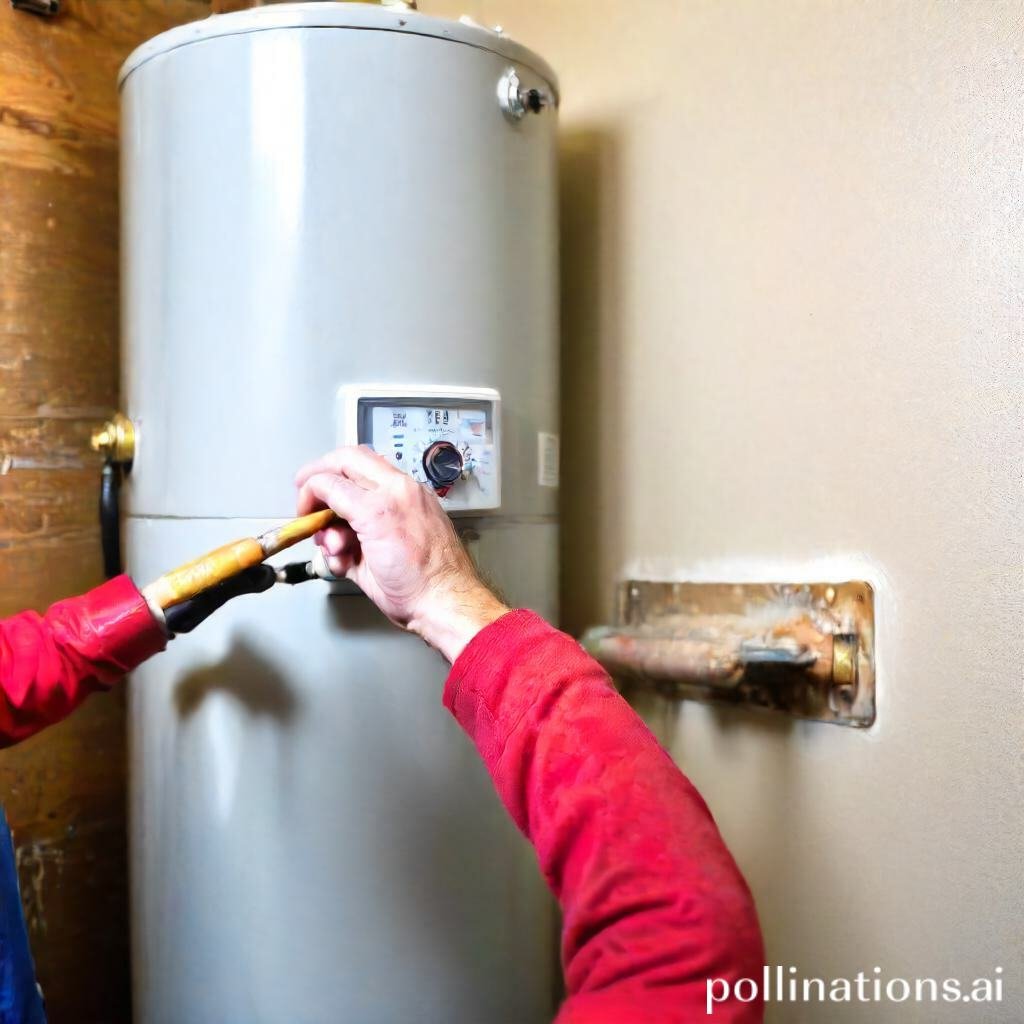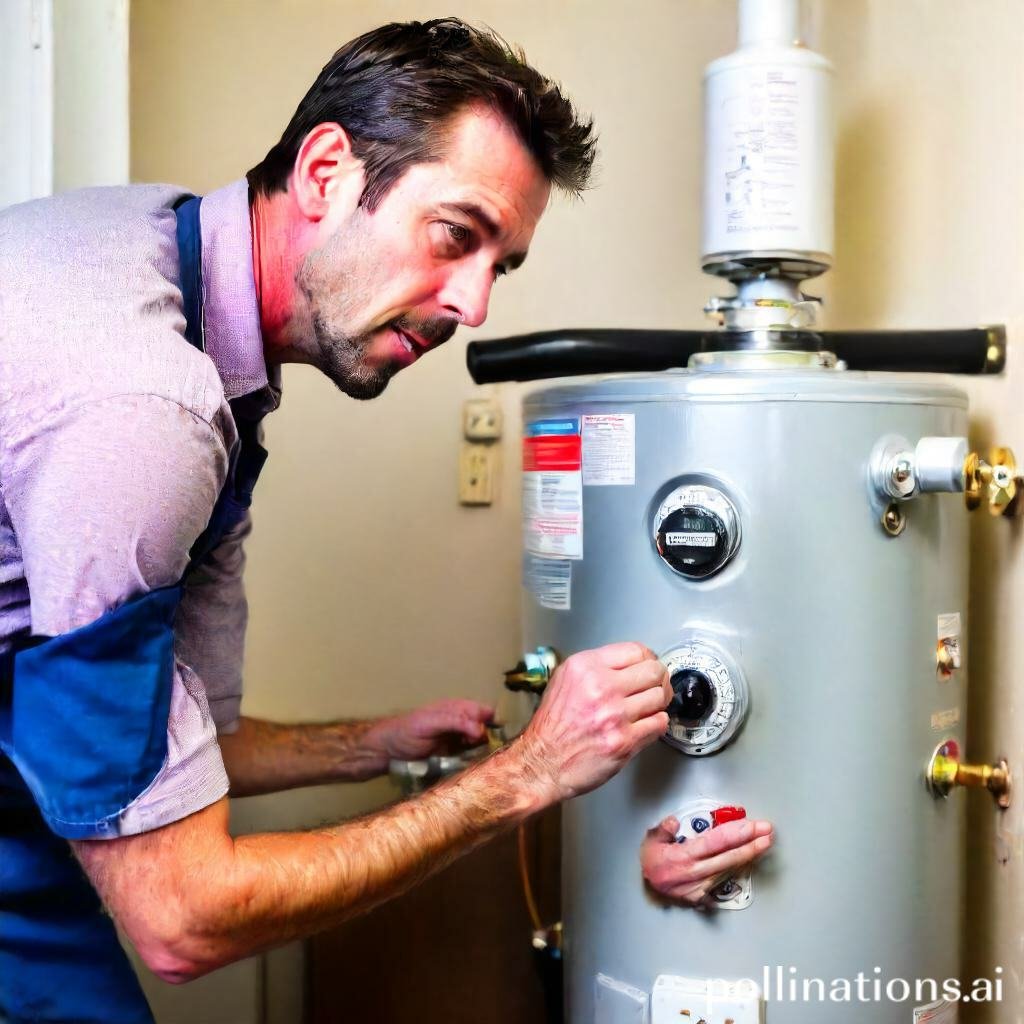
II. To fix a water heater temperature that is too hot, adjust the thermostat to a lower setting.
III. If adjusting the thermostat does not solve the issue, it may be necessary to replace the thermostat or seek professional help to ensure the water heater is functioning properly.
If your water heater temperature is too hot, it’s important to take immediate action to prevent any potential accidents or discomfort. In this guide, we will discuss the steps you can take to regulate the temperature of your water heater and ensure a safe and comfortable experience.
From adjusting the thermostat to checking for faulty components, we will cover all the necessary information to help you troubleshoot and resolve this issue. By observing these guidelines, you can maintain the perfect temperature for your water heater and enjoy hot water without any concerns.
Mastering Water Heater Temperature Settings
Temperature Settings on Water Heaters
Water heaters come with different temperature settings that can be adjusted according to your needs. These settings determine the temperature at which the water is heated and delivered to your faucets or showers. Common temperature settings include:
| Setting | Numerical Value |
|---|---|
| Low | 120°F |
| Medium | 140°F |
| High | 160°F |
The temperature settings can usually be adjusted using a dial or a digital control panel on the water heater.
Recommended Temperature Setting
The recommended temperature setting for water heaters is typically 120°F. This temperature strikes a balance between comfort, energy efficiency, and safety. Here are the reasons behind this recommendation:
- Comfort: A temperature of 120°F provides hot water that is comfortable for most household needs, such as showering or washing dishes.
- Energy Efficiency: Lowering the temperature setting to 120°F can help save energy and reduce utility bills. Heating water accounts for a significant portion of a household’s energy consumption.
- Safety: Setting the temperature too high can lead to scalding injuries, especially for children or elderly individuals with sensitive skin. By keeping the temperature at 120°F, the risk of burns is minimized.
Signs of a Water Heater Temperature that is Too Hot
Having a water heater that is set at the right temperature is essential for a comfortable and safe home. In contrast, there are times when the water heater temperature may become too hot, leading to various signs and issues. By being aware of these signs, you can take the necessary steps to address the problem and ensure the optimal performance of your water heater.
1. Scalding Hot Water
One of the most obvious signs that your water heater temperature is too hot is when the water coming out of your faucets is scalding hot. If you find that even the lowest setting on your faucet produces water that is uncomfortably hot, it may be an indication that the temperature setting on your water heater is too high. This can be dangerous, especially if you have young children or elderly individuals in your home who may be more susceptible to burns.
2. Unusual Noises
Another sign that your water heater temperature is too hot is when you start hearing unusual noises coming from the unit. Excessive boiling or rumbling sounds indicate that the water inside the heater is reaching temperatures higher than it should. This can be caused by a malfunctioning thermostat or a buildup of sediment inside the tank, both of which can result in the water heater working harder than necessary and potentially causing damage.
3. Leaks
If you notice any leaks around your water heater, it could be a sign that the temperature is set too high. The excessive heat can cause the pressure inside the tank to increase, leading to leaks or even bursts in severe cases. It’s important to address any leaks promptly to prevent further damage and potential flooding in your home.
Reasons for High Water Heater Temperature
Pertaining to your water heater, maintaining the right temperature is crucial for both comfort and safety. That being said, there are instances where the water heater temperature can become too hot. In this section, we will ponder the various reasons behind this issue and provide effective solutions to fix each one.
Thermostat Malfunction
One of the primary causes of excessively high water heater temperature is a malfunctioning thermostat. The thermostat is responsible for regulating the temperature of the water in the tank. If it becomes faulty, it may fail to accurately control the temperature, leading to scalding hot water in your taps and shower.
To fix this issue, you can start by checking the thermostat settings. Ensure that it is set at an appropriate temperature, typically around 120 degrees Fahrenheit. If the thermostat is set too high, adjust it to a lower setting and monitor the water temperature. If the problem persists, it may be necessary to replace the thermostat entirely. Consult a professional plumber for assistance in this case.
Sediment Buildup
Another common culprit behind high water heater temperature is sediment buildup within the tank. Over time, minerals and debris can accumulate at the bottom of the tank, insulating the heating element and causing it to overheat the water.
To address this issue, you will need to flush out the sediment from the tank. Start by turning off the power supply to the water heater and shutting off the water valve. Connect a garden hose to the drain valve at the bottom of the tank and open it, allowing the sediment-laden water to drain out. Repeat this process until the water runs clear. Finally, close the drain valve, refill the tank, and turn the power supply back on.

How to Adjust Water Heater Temperature
Adjusting the water heater temperature is a simple process that can help you optimize your hot water supply. By heeding a few easy steps, you can ensure that your water heater is set to the ideal temperature for your needs. Here is a step-by-step guide to help you through the process:
Step 1: Turn off the Power Supply
Before making any adjustments to your water heater temperature, it is crucial to turn off the power supply. This will help prevent any accidents or injuries during the process. Locate the power switch or circuit breaker that controls your water heater and switch it off.
Step 2: Adjust the Thermostat
Once the power supply is turned off, you can proceed to adjust the thermostat. The thermostat is typically located on the front or side of the water heater. Carefully remove the cover to access the temperature adjustment dial.
Using a flathead screwdriver or a similar tool, rotate the dial to increase or decrease the temperature. Imperative to make gradual adjustments and test the water temperature after each adjustment.
Safety Precautions
- Always wear protective gloves and eyewear when working with your water heater.
- Ensure that the area around the water heater is clear of any flammable materials.
- If you are unsure about any aspect of adjusting the temperature, it is best to consult a professional plumber.

Maintaining the Appropriate Water Heater Temperature
Water heaters play a crucial role in our daily lives, providing us with warm water for various purposes. Conversely, it is essential to maintain the appropriate temperature for water heaters to ensure their optimal performance and to enjoy the benefits they bring.
The Importance of Maintaining the Appropriate Temperature
Maintaining the right water heater temperature offers several advantages. To begin with, it ensures safety by preventing the water from becoming too hot and causing scalding accidents, especially for households with children or elderly individuals. In addition, it helps in energy conservation, as excessive temperatures can lead to unnecessary energy consumption. By setting the temperature at an appropriate level, you can reduce energy waste and save on your utility bills.
Tips for Maintaining the Temperature
To maintain the appropriate temperature for your water heater, follow these helpful tips:
- Regular Maintenance: Schedule regular maintenance for your water heater to ensure it is functioning efficiently. This includes checking the thermostat and heating elements, cleaning the tank, and inspecting for any leaks or signs of damage.
- Adjusting the Thermostat: Set the thermostat to the recommended temperature range, typically between 120°F (49°C) and 140°F (60°C). This range provides adequate warmth for your water in the course of minimizing the risk of scalding.
- Insulation: Insulate your water heater and the hot water pipes to reduce heat loss. This helps in maintaining the desired temperature for a longer duration, further enhancing energy efficiency.
Maintaining the appropriate water heater temperature is essential for safety, energy conservation, and cost savings. By heeding the tips mentioned above and regularly monitoring and maintaining your water heater, you can ensure its optimal performance and enjoy the benefits it brings. Remember to prioritize safety by setting the temperature within the recommended range, and consider insulation to improve energy efficiency.
| Temperature Setting | Benefits |
|---|---|
| 120°F (49°C) – 140°F (60°C) | Safe temperature range to prevent scalding accidents |
Bottom Line
When your water heater temperature is too hot, it can be dangerous and lead to scalding injuries. Fundamental to take immediate action to prevent any accidents from happening. To begin with, turn off the power supply to the water heater and let it cool down. Then, adjust the thermostat to a lower temperature and test the water temperature before using it. If the problem persists, it may be time to replace the thermostat or the entire water heater. Regular maintenance and inspections can also prevent this issue from occurring in the first place. Remember, safety should always be a top priority when dealing with hot water heaters.
By abiding by these simple steps, you can ensure that your water heater is functioning properly and safely. Don’t ignore any signs of overheating and take action as soon as possible. Your family’s safety is worth the effort and investment in maintaining your water heater.
Read More:
1. Can Cold Weather Impact Water Heater Temperature?
2. Best Practices For Maintaining Consistent Temperature In Water Heater














